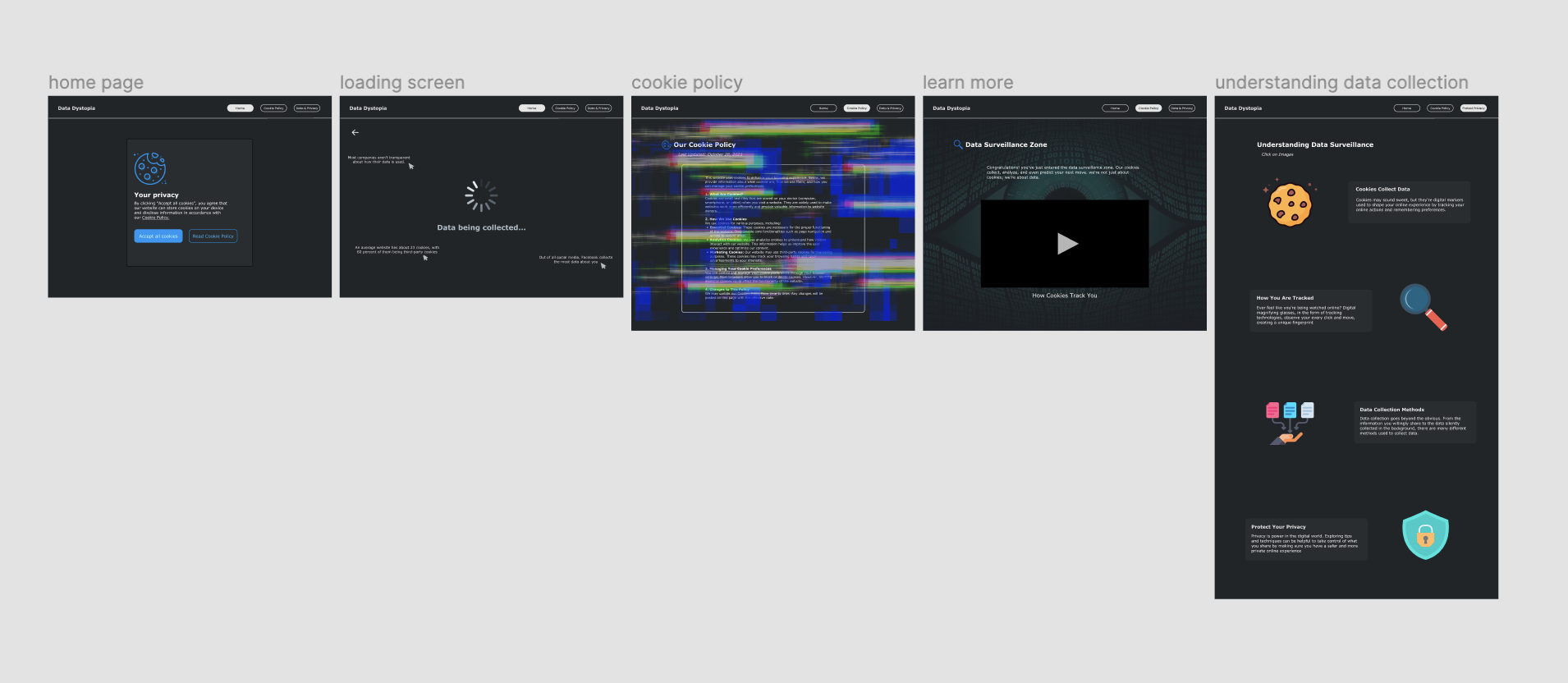Data Dystopia
Exploring online privacy and data surveillance

Data Dystopia is an interactive how-to website that educates users about online privacy and data surveillance. It uses engaging storytelling elements and simulated real-world scenarios to demonstrate the invisible data collection and tracking that happens on most websites. The website guides users through experiences that empower them to think critically about their digital privacy.
Main features I created include a misleading endless loading bar, glitch effects over privacy policies to represent the lack of transparency in data practices, interactive elements that react to user clicks to simulate data tracking, and scenarios that let users see different outcomes based on the privacy decisions they make while online shopping. The website aims to make the complex concepts around data privacy more understandable and relatable. Its playful yet unsettling interactions push people to question norms of data collection and take control of their digital presence.
Defining the Problem
While many internet users are concerned about online privacy and data collection, the actual scope and invisibility of surveillance practices on common digital platforms is not fully understood by the average user. Websites and services often gather incredible amounts of personal data and activity logs - tracking movements, interests, purchases, and more - typically without consent. However, these data practices are so technically complicated and intentionally hidden that most users feel confused, overwhelmed, and powerless in terms of protecting their own privacy.
I was inspired by the clickclickclick.click website, which aims to educate internet users about online tracking in an interactive, eye-opening way. I wanted to incorporate this style of tangible, interactive elements that react to users and reveal invisible concepts. Showing data surveillance practices in a visible, experiential way can educate users more effectively compared to just textual explanations. This guided my design thinking.- leading me to include interactive elements like an endless loading bar and clicks that immediately show where or how many times the user has clicked.
What:
A website educating people about online privacy and data surveillance in an engaging,
storytelling way
Who:
For everyday internet users who are concerned about data privacy but may not fully understand
the extent of data collection and surveillance
When + Where:
Web application coded with HTML, CSS, and JavaScript
Design Process
Creating a Wireframe on Figma
